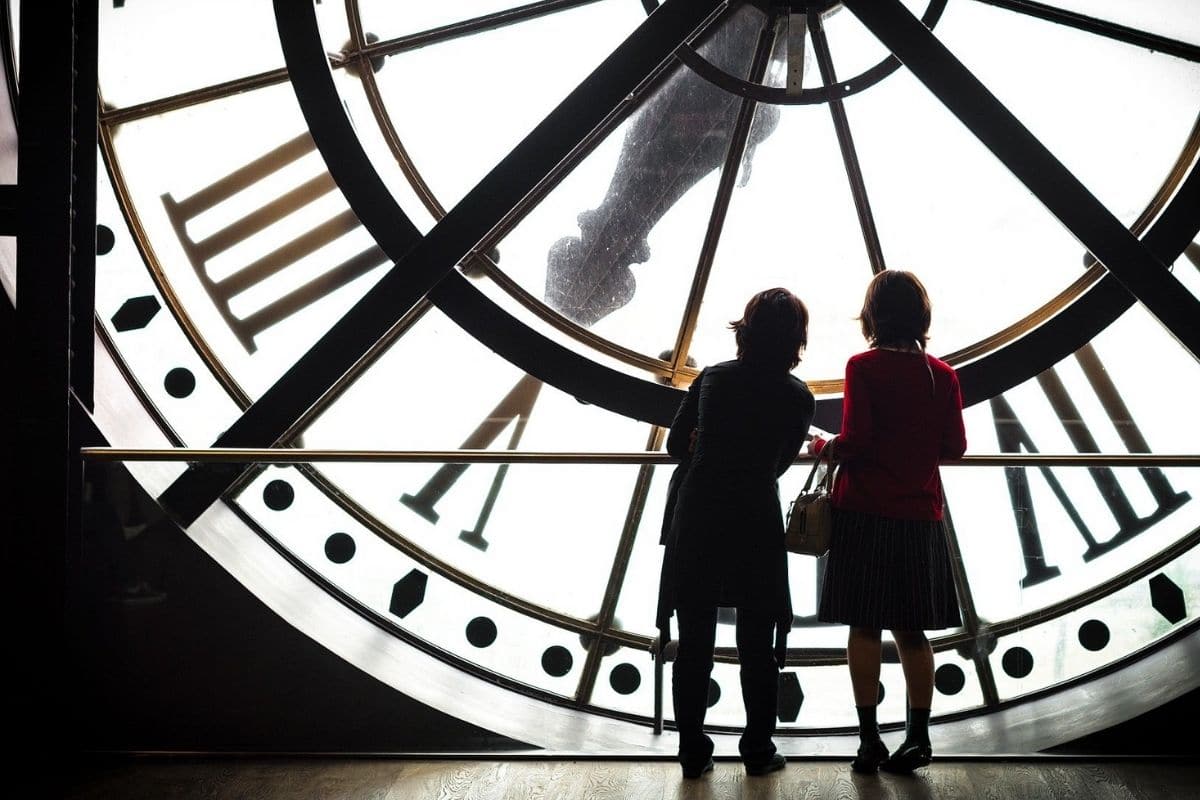

We are just as bad as two years ago, when scientists set the doomsday clock at 100 seconds to midnight.
To this conclusion comes the Science and Security Board of the Bulletin of the Atomic Scientists. And that is why the scientists have decided not to change the doomsday clock this year, but to leave it at 100 seconds to midnight.
doomsday clock
How is the planet doing? In 1947, scientists came up with a striking metaphor that made this clear at a glance: the doomsday clock. The clock shows how far we are from midnight, a moment that in this case symbolizes a man-made destruction of the planet. The situation is regularly reassessed and the clock – if necessary – adjusted. The last time the hands of the clock were moved was in January 2020. And so it was high time to cut the knot again: are we still heading for our self-created destiny or is there reason for optimism?
100 seconds
The Bulletin of the Atomic Scientists has just passed its verdict and it’s not very promising. “The doomsday clock is stuck at 100 seconds to midnight,” said Sharon Squassoni, president of the United Nations Science and Security Board. “And that’s not good news.”
The doomsday clock was created in 1947 and today celebrates its 75th anniversary. The fact that 75 years later we still need a clock to alert us to the danger we pose to our own planet is tragic in itself. What does not help is that the hands are moving closer and closer to midnight, especially in recent years. In addition, the reasons for that movement seem to be more and more numerous; While the threat in 1947 mainly came from nuclear weapons, in recent years there have been concerns not only about nuclear weapons, but also about fake news and the climate problem.
2020
The penultimate time that the hands of the doomsday clock were moved was in January 2020. An increased risk of a nuclear arms race, the climate problem and rampant fake news then prompted scientists to change the clock – which two years earlier was 2 minutes earlier. Bet 12 – to bet 100 seconds to twelve. Never before had the doomsday clock been so close to midnight.
2022
We are now two years later and in addition to the threat of nuclear weapons, fake news and climate change, there is also a pandemic that has already claimed more than 5.5 million lives worldwide. But there is more that worries the scientists. Tensions, for example, remain between the US, China and Russia – three giants with an impressive arsenal of nuclear weapons. The unrest on the Ukrainian border, the fake news (particularly around the US elections) and the lack of climate action are also worrying. Just like the fact that the world is failing to share vaccines fairly and to put a stop to the coronavirus. In addition, the researchers are also concerned about cybersecurity and fear the rise of biological weapons, which some countries already have at their disposal and which several terrorist organizations would be happy to get their hands on. And while there are also bright spots – such as New START – a nuclear disarmament treaty between the US and Russia that was extended by five years in 2021 – these are far from outweighing the negative developments that the researchers see. “The mix of threats – with some positive developments being outweighed by worrying and accelerating negative trends – means that members of the Science and Security Board deem the world no safer than it was at this time last year and have decided to reset the doomsday clock to 100 seconds to midnight. However, that does not mean that the international security situation has stabilized,” the researchers added hastily. “On the contrary, the clock is still closer to a civilization-ending apocalypse than ever, because the world is still in an extremely dangerous moment.”
The doomsday clock is in the hands of the Bulletin of the Atomic Scientists. A special committee – made up of scientists and other experts who know everything about nuclear technology and climate research, and also regularly advise governments – regularly discusses world events and then decides whether to change the clock or not.
It’s all not very promising. But it is by no means meant to be discouraged; the clock has been developed to encourage people to take action. “The situation is serious, but all is not lost,” emphasizes Ray Pierrehumbert, member of the Science and Security Board. We have created the threats, but we can also remove them. However, in many cases it requires close cooperation at an international level. For example, reducing emissions and distributing corona vaccines fairly should be high on the agenda, the researchers believe. There must also be more ambitious and widely supported disarmament treaties and governments, but also media and technology companies must join forces in the fight against fake news. The researchers also argue for better monitoring of research that could lead to the development of bioweapons. “Without swift and focused action, truly catastrophic events — events that could end civilization as we know it — become more likely,” the researchers warn again. “When the clock is 100 seconds to midnight, we are all under threat (…) Now is the time to act.”
Source material:
“At doom’s doorstep: It’s 100 seconds to midnight– Bulletin of the Atomic Scientists
Image at the top of this article: valentinsimon02 (via Pixabay)